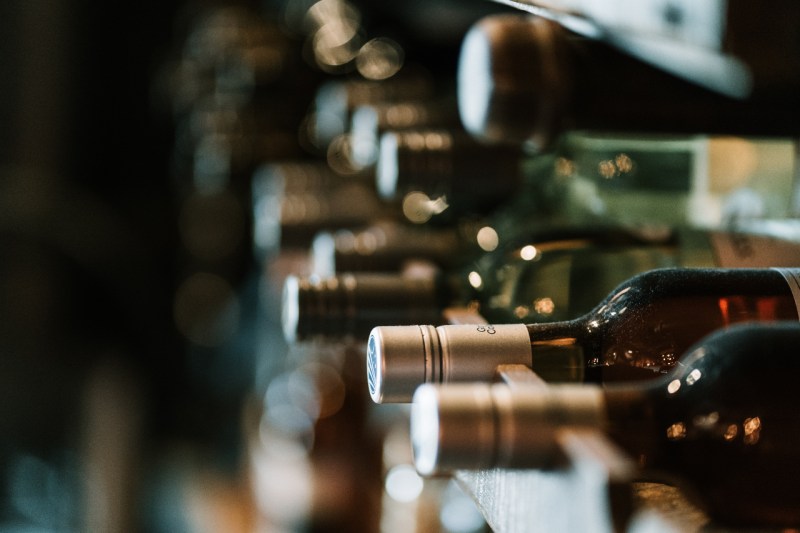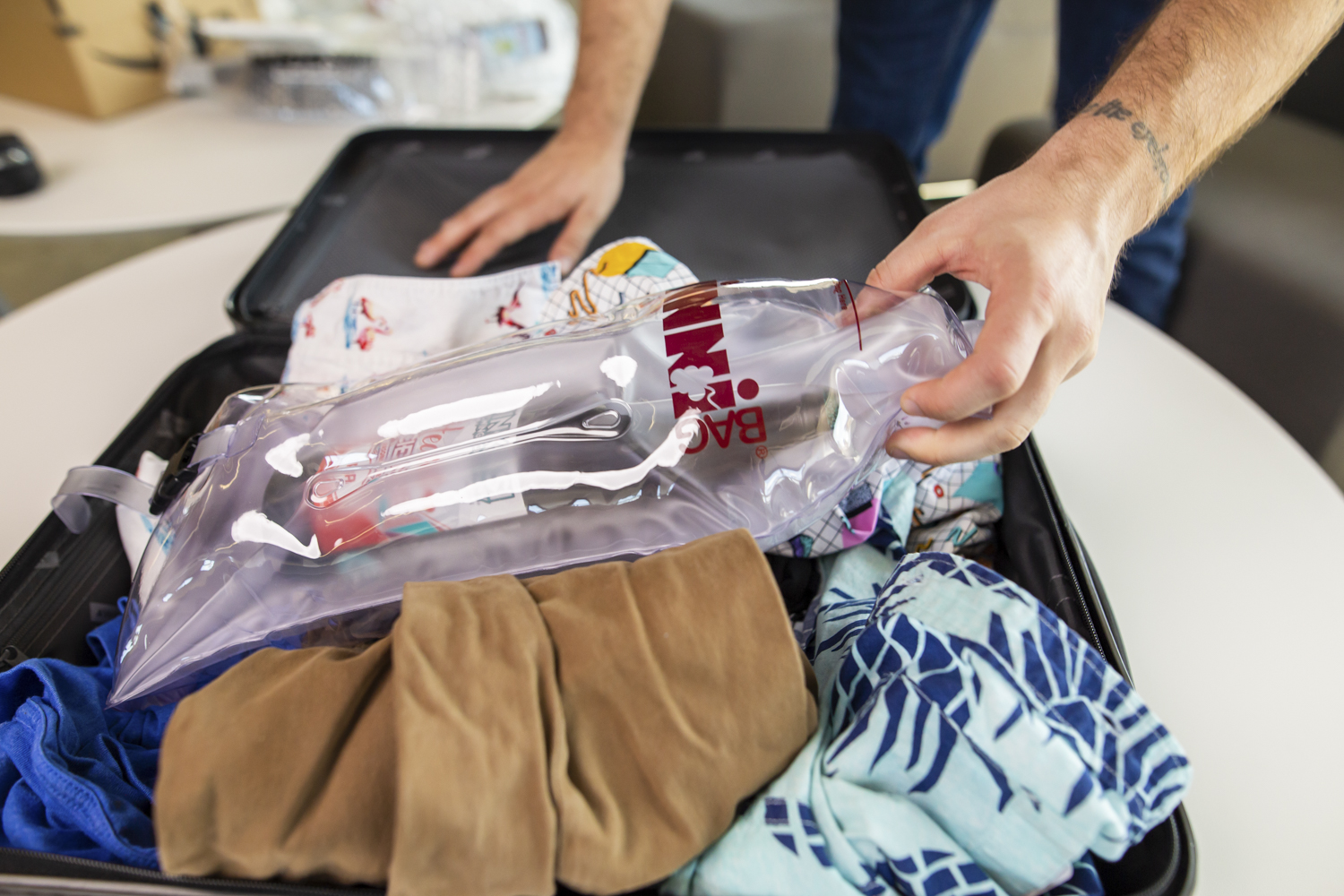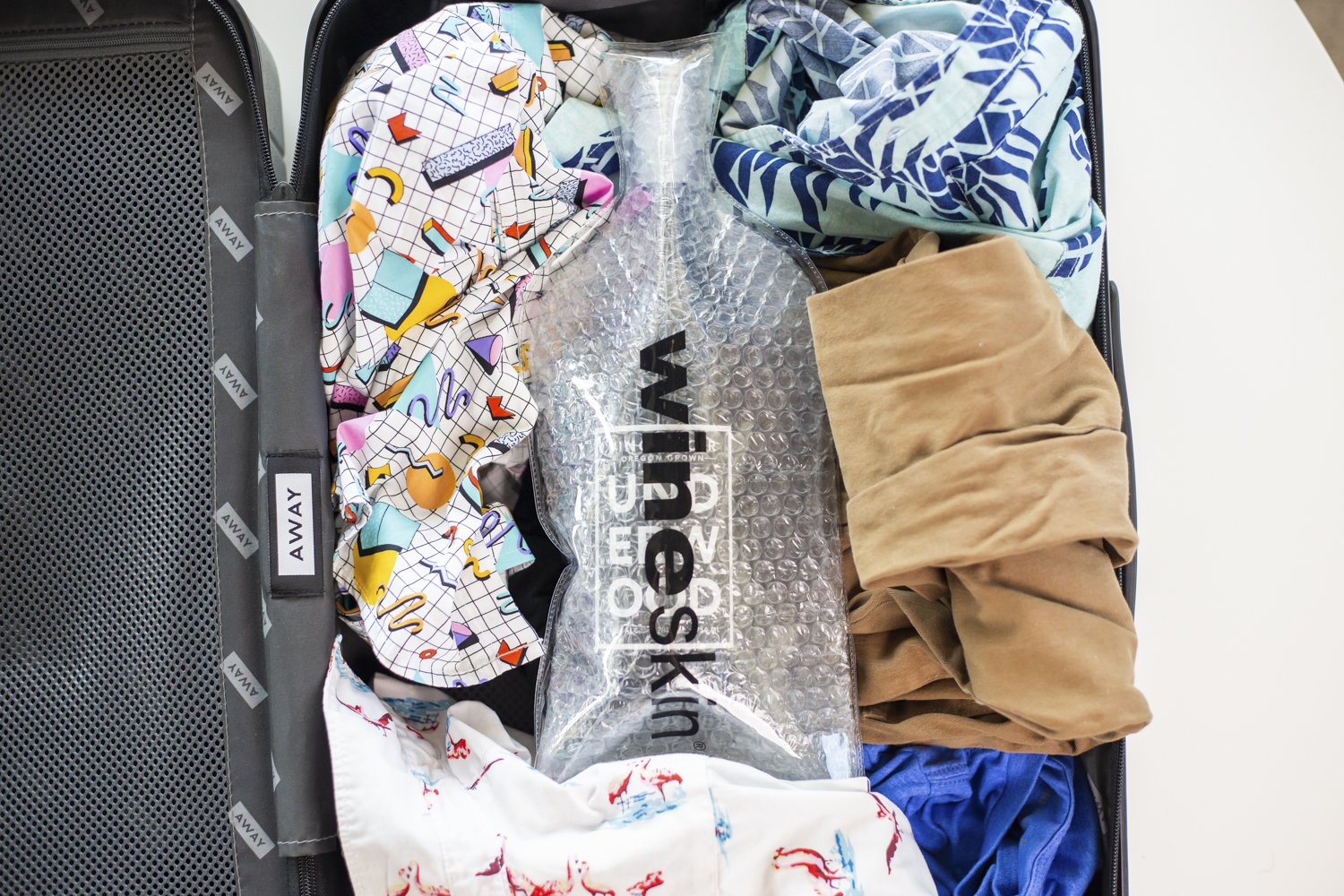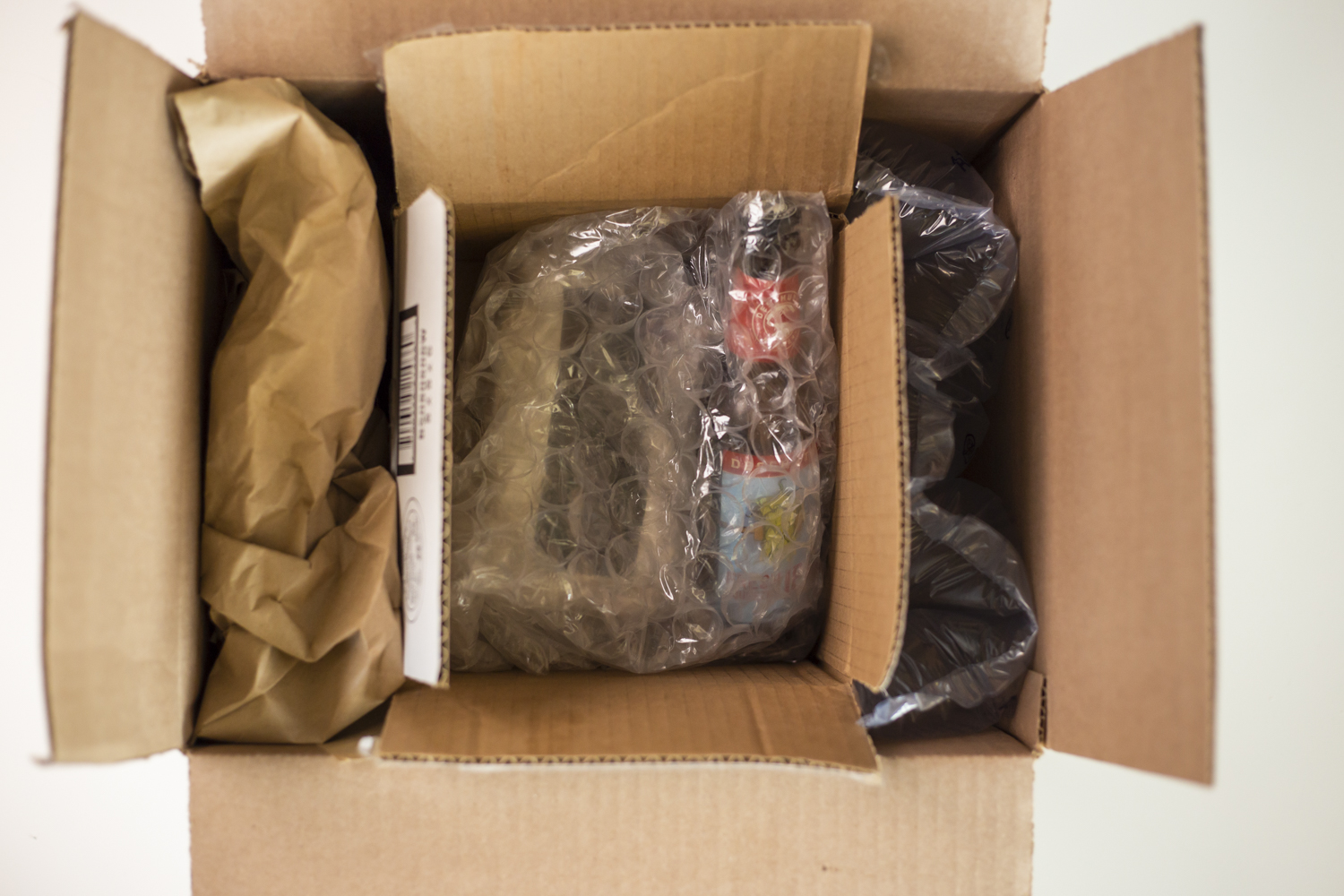If you’re anything like me and can’t resist picking up a few bottles of that amazing local wine or craft beer while you’re traveling, you’ve probably faced that moment of panic when it’s time to pack. Maybe you went a little overboard at a vineyard in Napa or filled half your suitcase with IPAs from a cool little brewery you stumbled upon. No judgment — been there, done that. Honestly, local beer and wine make some of the best souvenirs (and gifts, if you don’t end up keeping them for yourself). Here’s the big question, though. Can you bring alcohol on a plane?
The short answer is yes. Like with anything else in life, there are rules, and it’s important to know them before you head to the airport, including how much and what you can bring. If you’re flying with beer or wine, it’s also essential to know how to pack the alcohol for the flight. There’s nothing worse than a bottle of red wine breaking in your suitcase and staining everything, or a broken beer bottle making your luggage smell like yeast right before a long-haul flight. With a few smart packing decisions, your beer or wine will be safely waiting for you at the baggage carousel, wherever your final destination may be.
The first step when flying with alcohol is to remember to leave the open bottles behind. Alcohol going on a plane must be unopened and in its original packaging. Whether you check your bags or prefer carry-on luggage, you need to make sure those bottles are safe and secure for the trip. Here are our suggestions for packing your own beer and wine for travel, as well as the important Transportation Security Administration (TSA) and Federal Aviation Administration (FAA) rules to keep in mind.
Can you bring alcohol on a plane?

The next step to flying with beer and wine is knowing whether or not you can bring it through security as a carry-on or if it will need to be checked and travel in the cargo hold. As anyone who has traveled on a plane in the last few years knows, there are TSA rules for flying with liquids. That pertains to alcoholic liquids as well. For carry-on, you can only bring bottles that are less than 3.4 ounces or 100 milliliters and are secured in a single quart-sized plastic bag. But you can bring up to 1.3 gallons or 5 liters per passenger in checked bags. So, if you want to buy more than a mini bottle, you must also pay those checked baggage fees.
Another thing to keep in mind is the alcohol content when flying with alcohol. According to the FAA, alcoholic beverages that contain “more than 24% but not more than 70% alcohol by volume (up to 140 proof)” and are still in their unopened retail packaging can be taken as carry-ons if they are at or under 3.4 ounces. Otherwise, for up to 1.3 gallons, they’ll need to be checked. For beer and wine under 24% ABV, there aren’t any limitations on how much alcohol you can fly with in checked bags as long as it fits in your luggage. Anything over 70% ABV won’t be permitted, but this would only apply to distillates and extremely hard liquor, not beer or wine.
How to choose the best suitcase for flying with alcohol

If you regularly bring beer or wine home from a trip involving flights, you’ll want to invest in a sturdy, durable, hard-shell suitcase. The ideal piece of luggage for transporting alcohol should have a rigid, hard-sided structure. Bags with collapsible walls, like duffels, are unsuitable for transporting such delicate cargo.
The hard outer shell of the suitcase will ensure that, whether the bag gets thrown around a lot by baggage handlers or ends up at the bottom of the cargo hold with tens of other suitcases piled on top of it, the weight won’t press down on your suitcase contents and potentially break anything fragile inside.
It’s true that some soft or fabric suitcases are still durable enough to provide protection, especially if you make sure the fragile bottles are well-padded. Unfortunately, you have no control over what happens to your suitcase once it gets put on that conveyor belt behind the front desk to go to the great cargo hold in the literal sky, so it’s better to be safe than sorry.
In addition to a heavy-duty suitcase, you should also make sure the bottles or cans are safely wrapped for the flight.
How to pack beer and wine in your suitcase

First, let us assure you that your beer and wine, even if they are carbonated and contain bubbles like sparkling wines, will not explode during your flight. The cargo hold and the cabin are pressurized, so that great new IPA you just had to buy a few bottles of, or the fancy bubbly you’ll save for a special occasion won’t blow their top on the way home.
With that said, accidents can still happen. Your bag could be jostled around too much, a baggage handler could throw it too hard, or, if you travel with soft or fabric suitcases, heavier luggage could land on top of it and break the fragile bottles inside. All in all, there are plenty of ways beer cans or bottles can be broken over the course of a flight. So, when flying with beer or wine, you want to ensure it’s thoroughly padded and protected to survive the trip.
Wrap each bottle or can in its own plastic bag
If one can or bottle breaks during transit, the bag will contain the mess, protecting your clothes and other belongings from being soaked in wine and beer. Ziploc bags come in handy for this purpose, but you can use just about any plastic bag if it can be tied closed or secured. If you’re worried about plastic waste, you can always reuse plastic bags again and again or invest in reusable silicone bags that can easily be washed out and reused in the future. Never pack bottles or cans together.
Make sure each bottle or can is well padded
After making sure each can or bottle has been wrapped up in plastic, make sure that each is individually surrounded by enough padding that they won’t knock against each other or roll around. That means adding padding on the sides, top, and bottom. According to packing expert Vinpair, just wrapping your clothes, towels, or other soft items around the bottles is often sufficient, especially if you use heavier clothes like jackets or sweaters. If you’re still afraid of any liquid leaking onto your clothes if there’s breakage, you can pad them with bubble wrap before placing the bottle or can into the plastic bag. Make sure to pad each bottle or can separately.
Double-check that they are well secured
For a final check, jostle or rattle your suitcase a bit to see if the bottles or cans roll around or knock against each other. If they do, rearrange them to make sure they are as well secured and padded as possible.
Cans and glass bottles travel differently. Next, we’ll discuss the pros and cons of each and provide specific packing instructions.
How to pack beer cans for air travel

If you have a choice between cans and bottles, choose cans. There’s no longer any stigma around canned beers or even wines. Some of the best options in the world are released exclusively in these portable, sturdy containers. The real travel benefit is that cans are lighter and more resilient than glass. Even though cans aren’t especially fragile, you should still take some precautions when packing.
To be safe, we suggest using this method to keep your packed cans safe during travel.
- Place your cans inside a plastic bag.
- Seal the opening of the bag with packing tape.
- Surround the cans in the middle of the suitcase with clothes, towels, or other soft goods to create a nest and reduce movement.
How to pack bottles for air travel

Glass bottles require far more attention and finesse when packing. You need to ensure the bottles do not touch each other, that the glass is close to the middle of the bag, and that the bottles are packed tightly so that they shift as little as possible.
This is where creativity comes into play. Whenever possible, look for ways to safely integrate your glass into protective items you’re already packing. For example, 12-ounce bottles fit nicely and snugly inside running shoes. Your waterproof dopp kit may provide extra space to wrap a smaller bottle safely. Those elastic compartments in the divider of your suitcase? They make another built-in spot to hide away your precious cargo.
If you’re planning to bring more than a couple of beers or larger-format bottles, your travel essentials must include bubble wrap, packing tape, and plastic bags. Use these guidelines for safe do-it-yourself packing:
- Tape down the caps tightly onto the bottle.
- Place each bottle inside of a sock or wrap individually with bubble wrap.
- Bundle all of your bottles together and enclose the group in a halo of bubble wrap.
- Seal the collection in a plastic bag in the center of your suitcase and pad out the sides with clothes.
Can you bring alcohol back duty-free?

Apart from the cost of a checked bag (which, as we all know, can be no small fee), the only time you need to pay for flying with beer and wine is if you’re flying to or from another country. In that case, you must pay import or duty fees on the booze, depending on how much you’re bringing or where you’re flying to.
If you’re a U.S. citizen returning from abroad with some souvenir bottles of alcohol, you’re allowed to bring 1 liter of alcohol for personal use back duty-free per state and federal regulations. However, you will likely have to pay customs fees for larger amounts. This varies depending on the state and amount, so do your research and always declare anything you are bringing into the U.S. from out of the country.
Taking beer or wine to other countries will depend on your destination’s import and customs laws. Similarly, you’ll want to research any requirements or fees before your travels to avoid any surprises at the airport.
Best products for packing alcohol when flying

If you’re a frequent traveler and often bring back your favorite wines and craft beers, you might want to think about investing in products specifically designed for packing alcohol. Here are some of the top products to consider.
Buy at Amazon
The WineSkin is a self-sealing, bubble-wrap sleeve designed for wine. They also fit most beer bottles nicely, including 750-milliliter sizes and 22-ounce bombers.
Buy at Amazon
Jet Bags are another option for traveling with potent potables. These bags have zipper seals and can absorb up to 750 milliliters of liquid in case the worst happens and you return home minus a bottle.
Should you ship your alcohol instead of flying with it?

If all of this sounds like too much to deal with when preparing to fly home, you could just ship your items. When shipping, wrap cans and bottles in plastic wrap. Then, place it in a fitted cardboard box. Put that box inside a larger box with scrap paper, airbags, or packing peanuts as a cushion.
All of those packing materials are available at the shipping office. It can become an expensive endeavor, though. With insurance, shipping can provide the safest route home for your new boozy souvenirs. Remember, there are restrictions when it comes to shipping alcohol, too. So, it’s a good idea to decide what you’re going to do before your trip.
Don’t pop the cork right away

While opinions can be mixed on this topic, many people say that you should not open a bottle of wine right after you get it off the plane. Sometimes called “bottle shock,” it’s the idea that, unlike other alcoholic beverages, wine continues to age in the bottle, and because of this, the pressure, motion, and changes in temperature experienced during a typical flight impact the wine, affecting the taste, especially with red wines.
The rule of thumb is to allow your wines to rest from their travels, stored upright for 48 hours or so, with the wine not touching the cork. This will allow the wine to stabilize, and any sediments that were stirred up during the flight will settle back down to the bottom of the bottle.
Never fear flying with beer or wine again

Can you fly with beer or wine? Now, you know the long and short of it. Next time you hop on a plane to take a trip or are coming home from a vacation, you’ll know exactly how to make sure that the wonderful bottle of wine you tried at that scenic vineyard or those couldn’t-leave-without lagers from that hip brewery will make it to their final destination safe and sound.
FAQs

Can you bring alcohol in your carry-on bag?
Yes, but only in small amounts. The TSA allows you to bring alcohol in your carry-on as long as each container is 3.4 ounces or less and fits inside a quart-sized clear plastic bag. Anything larger needs to be packed in your checked luggage.
How much alcohol can you bring in checked luggage?
You can bring up to 5 liters of alcohol per person in your checked luggage if it’s between 24% and 70% alcohol by volume, and it must be in unopened retail packaging. If the alcohol is under 24% ABV (like most beer and wine), there’s no federal limit as long as it fits safely in your bag.
Can you bring beer and wine on a plane?
Yes! Beer and wine under 24% ABV are allowed in your checked luggage with no set quantity limit, provided it’s for personal use and packed securely. If you’re carrying small bottles under 3.4 ounces, you can also include those in your carry-on.
Will beer or wine explode on a flight?
Nope. The cargo hold and cabin are both pressurized, so your bottles and cans won’t explode due to altitude. The real risk is from rough handling, so pack everything securely to prevent breakage.
What’s the best way to pack wine or beer in your suitcase?
Wrap each bottle or can individually in a plastic bag, then surround it with soft clothing or bubble wrap. Make sure nothing clinks together, and keep the alcohol centered in your suitcase with padding on all sides.
Can you bring alcohol back from another country?
Yes. U.S. Customs allows travelers age 21 and older to bring back 1 liter of alcohol duty-free. You can bring more, but you may be required to pay customs or duty fees depending on the quantity and your state’s regulations.



